Monday, May 14
7:30PM
AFS Theater, 6406 N Interstate 35 Frontage Rd (map)
AFS member & general ticket prices (tickets)
Experimental Response Cinema is thrilled to welcome Canyon Cinema 50 for two themed programs, Studies in Natural Magic (May 14, AFS Cinema) and Associations (May 15, Alamo Ritz). As the legendary experimental film distributor Canyon Cinema celebrates its fiftieth anniversary, these two screenings are a part of Canyon Cinema’s national tour of programs that represent a rich panoply of independent artist-made films. Introduced by curator David Dinnell.
Tonight– Program 1: Studies in Natural Magic
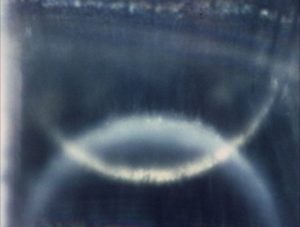
Light Lick: Amen (Saul Levine, 2017, 4 minutes, color, silent)
A stark portrait of my father at daily morning prayers to which I respond, AMEN. Light Licks are a series of films I began in 1999. The films are made frame by frame, often by flooding the camera with enough light to spill beyond the gate into the frame left unexposed. Light Licks are ecstatic flicker films inspired by jazz and mystic visionary practice, and extend my interest in the ways film can be a medium of visual improvisation. (Saul Levine)
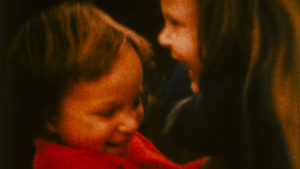
Catfilm for Katy and Cynnie (Standish Lawder, 1973, 3 minutes, color, silent)*
Preserved by the Academy Film Archive. In the early 70’s, a New York cat-lover and filmmaker named Pola Chapelle produced a “Cat Film Festival,” which was shown in a large downtown NYC auditorium to an audience of more than a thousand cat-lovers. At the time, I lived with my wife Ursula and our daughters Katy and Cynnie, together with many, too many cats. I loved my family but not the cats. (Standish Lawder)
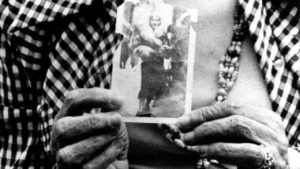
Ciao Bella or Fuck Me Dead (Betzy Bromberg, 1978, 9 minutes, color, sound)*
Ciao Bella is a summer-in-the-city travelogue that mixes verité of Lower East Side Bikers, Times Square topless dancers, and Coney Island crowds to achieve a highly charged atmosphere of manic exhibitionism and sexual raunch. (J. Hoberman)
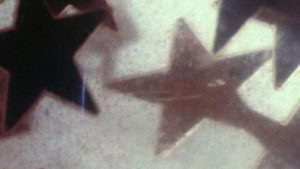
28.IV.81 (Bedouin Spark) (Christopher Harris, 2009, 3 minutes, color, silent)
Approximates a small child’s fantasy world in the dark. In a series of close-ups, the nightlight is transformed into a meditative star-spangled sky. An improvisation, edited inside the camera and shot on a single reel. The stars swirl in silence. (International Film Festival Rotterdam)
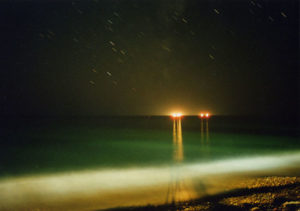
Redshift (Emily Richardson, 2001, 4 minutes, color, sound)
In astronomical terminology redshift is a term used in calculating the distance of stars from the earth, hence determining their age. Redshift attempts to show the huge geometry of the night sky and give an altered perspective of the landscape, using long exposures, fixed camera positions, long shots and timelapse animation techniques to reveal aspects of the night that are invisible to the naked eye. (Emily Richardson)
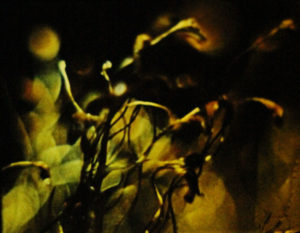
A Study in Natural Magic (Charlotte Pryce, 2013, 3 minutes, color, silent)
Witness an alchemist’s spell: the transmutation of light into substance: a glimpse of gold. (Charlotte Pryce)
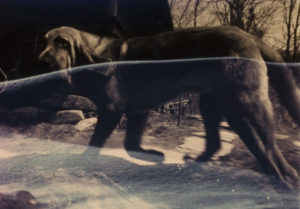
Starlight (Robert Fulton, 1970, 5 minutes, color/B&W, sound)
A Tibetan Lama. His disciple. The disciple’s wife, young boy and terrier. An old tugboat crossing the Mississippi River. A man in his seventh month of solitude. His hermitage built by his own hands. The man’s bloodhound; his cat. Clouds crossing the Continental Divide. A mountain stream. A girl. The sun. (Robert Fulton)
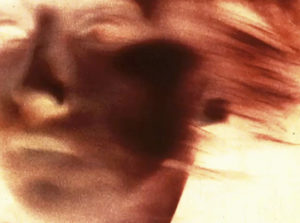
Swish (Jean Sousa, 1982, 3 minutes, color, silent)
The subject of the film is motion, and it is an attempt to get inside of it. It was made with a moving subject and a moving camera with an open shutter, the result being that each frame is unique, without the smooth continuity that is expected in film. The subject, a female body at close range, provides an intimacy and eroticism. At the same time it can be seen as a modern version of Futurist simultaneity. (Jean Sousa)
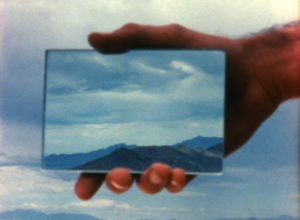
Hand Held Day (Gary Beydler, 1975, 6 minutes, color, silent)*
Preserved by the Academy Film Archive. Over the course of two Kodachrome camera rolls, we simultaneously witness eastward and westward views of the surrounding landscape as the skies, shadows, colors, and light change dramatically. Beydler’s hand, holding the mirror carefully in front of the camera, quivers and vibrates, suggesting the relatively miniscule scale of humanity in the face of a monumental landscape and its dramatic transformations. (Mark Toscano)
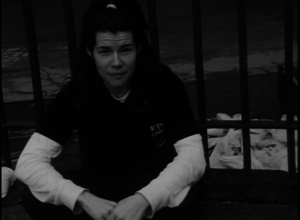
Portland (Greta Snider, 1996, 12 minutes, B&W, sound)
Three friends, including the filmmaker, rendezvous in Portland by hitchhiking or train-hopping from different cities. After a week of arguments, soup kitchens, brushes with the law, and bad weather, each leaves with a different memory of the trip, refracted through the tensions and expectations of their triangulated friendship. (Greta Snider)
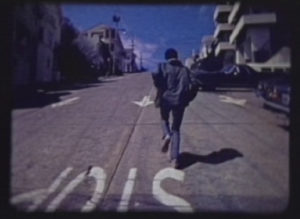
Degrees of Limitation (Scott Stark, 1982, 3 minutes, color, silent)*
A single 100’ roll shot with a hand-wound 16mm Bolex. For each shot the camera was wound one additional time, allowing me to make it a little bit farther up the hill. Will I reach the top before the film runs out? A study in self-imposed limitations. (Scott Stark)
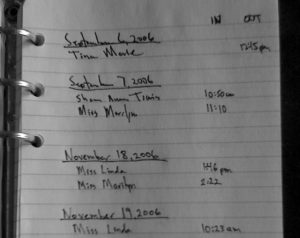
Shrimp Boat Log (David Gatten, 2006/2010, 6 minutes, color, silent)
A mathematical concept by Leonardo da Vinci, translated into a beautiful conceptual film consisting of 300 shots, each 29 frames long. Footage of a logbook of shrimp boat names and the image of those same boats at the mouth of the Edisto River. (Erwin Van’t Hart, International Film Festival Rotterdam)
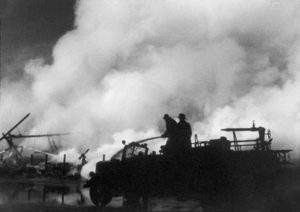
Boston Fire (Peter Hutton, 1979, 8 minutes, B&W, silent)
Boston Fire finds grandeur in smoke rising eloquently from a city blaze. Billowing puffs of darkness blend with fountains of water streaming in from offscreen to orchestrate a play of primal elements. The beautiful texture of the smoke coupled with the isolation from the source of the fire erases the destructive impact of the event. The camera, lost in the immense dark clouds, produces images for meditation removed from the causes or consequences of the scene. (Millennium Film Journal)
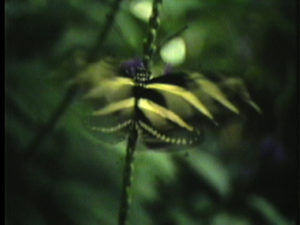
Orchard (Julie Murray, 2004, 10 minutes, color, sound)
Much of the footage that comprises Orchard is of a 19c ruins that included a walled orchard in and area known as Rostellen in southwest Ireland. It is set deep in the woods and the crumbling brick and mortar of the broken walls has become the anchor for the roots of slender trees, so uninhibited for all this time that they reach twenty feet in height and have thick roots that follow like slow lazy trickles of water and in other places branch and wind over the brickwork in an apparently intelligent arterial arrangement reminiscent of the human body. (Julie Murray)
* designates a new print which was created for the Canyon Cinema 50 tour. These were made from existing printing elements provided by the filmmaker or archive responsible for the film’s preservation.
About Canyon Cinema 50 Tour Series:
Four 16mm programs, composed of 43 films drawn from Canyon’s circulating collection of more than 3,400 titles, will provide an opportunity audiences to encounter some of the defining works of American avant-garde cinema as they were meant to be seen, while also recuperating forgotten voices and casting a contemporary eye on Canyon’s collection. Many of the films in the tour are recent restorations and new prints. Two digital programs built from new HD transfers are also available, allowing participation from a wide variety of venues and organizations. The programs have been curated by David Dinnell.
As a component of the Canyon Cinema 50 project, the touring program is meant not only to celebrate Canyon’s history but also to point the way towards the organization’s continued relevance as both a purveyor of and advocate for artist-made cinema, seeding the next generation of what founding filmmaker Bruce Baillie described as “a federation of willing devotees of the magic lantern muse.” For complete information, visit http://canyoncinema50.org/tour.
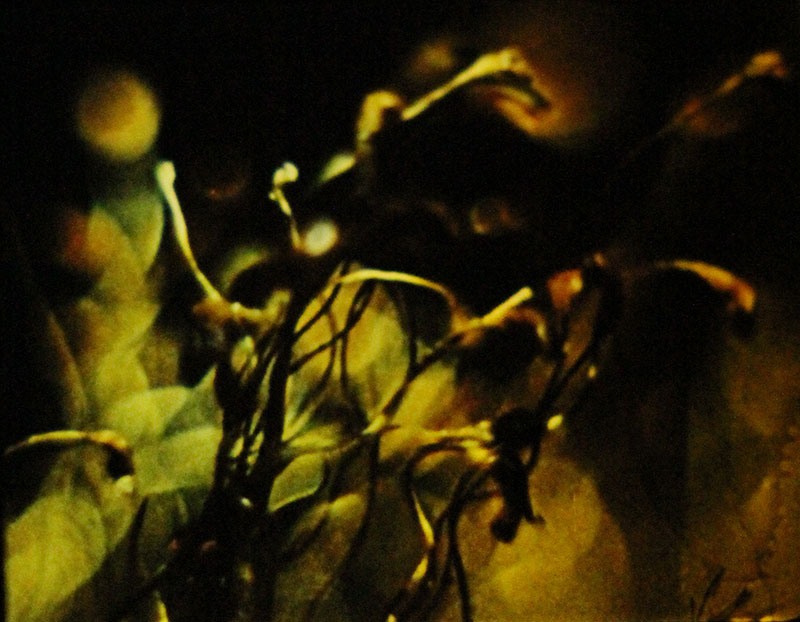
One thought on “Studies in Natural Magic:
Canyon Cinema 50 Program 1
May 14”